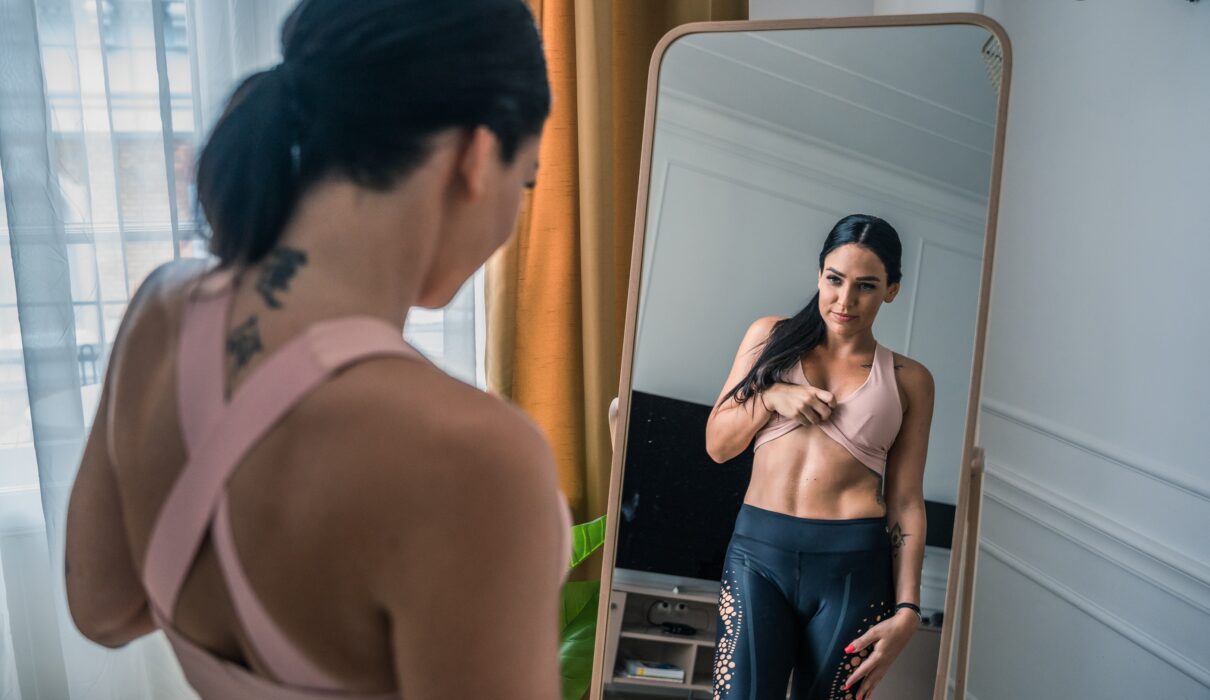In a society constantly bombarding us with images of unattainable beauty standards, the silent struggle of body dysmorphia looms large, affecting individuals of all genders. However, the impact on us as women is particularly pronounced, as societal pressures often magnify the importance placed on their physical appearance. In this intricate web of self-perception, we find ourselves grappling with distorted body images, a phenomenon known as body. Here, our fitness studio in Hampton looks at what body dysmorphia is, explores why it disproportionately affects women, and highlights the transformative potential of joining women-only gyms and how personal training for women helps us all overcome this persistent issue.
What is Body Dysmorphia?
Body dysmorphia, clinically known as Body Dysmorphic Disorder (BDD), is a mental health condition characterised by obsessive focus on perceived flaws in physical appearance. Individuals with BDD may spend an excessive amount of time scrutinising and worrying about their appearance, often fixating on minor imperfections that others may not notice. This relentless preoccupation can lead to severe emotional distress and impact daily functioning.
The roots of body dysmorphia are complex, involving a combination of genetic, neurobiological, psychological, and environmental factors. Social media, advertising, and societal expectations contribute to an environment where unrealistic beauty standards thrive, intensifying the struggle for those susceptible to BDD.
The intensity of Body Dysmorphic Disorder (BDD) varies among individuals. Some individuals are aware that their feelings are not grounded in rationality or justification, while others exhibit almost delusional certainty in their convictions.
BDD goes beyond mere vanity, causing profound emotional distress. It is not a fleeting concern that one can easily dismiss or overcome. The fixation can be so intense that it hampers a person’s ability to function effectively at work, school, or in social settings. Any part of the body can become the focal point of this obsessive concern.
Estimates suggest that between one and two percent of the Australian population are struggling with BDD. Typically surfacing in the teenage years, a period marked by heightened concern over physical appearance, BDD can cast a long shadow. The repercussions extend beyond the psychological realm, with symptoms impacting various facets of daily life, connecting with eating disorders, anxiety and depression disorders and trichotillomania (hair pulling). Concerningly, suicide rates are notably high among individuals wrestling with BDD. If you suspect that you are experiencing symptoms of BDD, seeking guidance from a medical professional or mental health expert is crucial.
The Weight on Women
While body dysmorphia affects people across the gender spectrum, women often bear a disproportionate burden due to societal norms that prioritise physical appearance. From a young age, girls are exposed to images of airbrushed models and celebrities, creating an unrealistic standard of beauty that becomes ingrained in their perception of self-worth. The pressure to conform to these ideals can lead to a constant cycle of comparison, self-doubt, and dissatisfaction.
Moreover, women are often subjected to societal judgments and expectations based on their appearance, influencing not only how they view themselves but also how they believe others perceive them. The intersectionality of factors such as race, age, and socio-economic status further complicates the experience of body dysmorphia for women, making it a multifaceted and pervasive issue.
A Recipe for Empowerment: Women-Only Gyms and Personal Training for Women
Recognising the unique challenges that we face as women in our journey towards positive body image and self-empowerment, women-only gyms provide a sanctuary free from gymtimidation – the judgment and scrutiny that can be prevalent in co-ed fitness spaces. These gyms, like our fitness studio in Hampton, foster a supportive and understanding environment where you can exercise without the pressure of comparison or judgment.
Female personal trainers also play a crucial role in this empowerment journey. They not only understand the physical nuances of women’s bodies but also appreciate the psychological and emotional aspects tied to body image. Through personal training for women, you get a safe space for you to address your fitness goals, overcome insecurities, and redefine your relationship with their bodies.
Why Personal Training for Women Works
Female personal trainers, like those found at our women only gyms, bring a unique perspective to the fitness journey. They create personalised programs that consider individual strengths, challenges, and aspirations, recognising that each woman’s path to empowerment is distinct. The emphasis is not solely on physical transformation but on building inner strength and resilience.
Beyond the technical aspects of training, female personal trainers become mentors and allies in the battle against body dysmorphia. They offer guidance, support, and a listening ear, creating a space where women feel heard and understood. This emotional support is often as crucial as the physical training itself in fostering a positive self-image and breaking free from the chains of body dysmorphia.
Start Your Journey Towards Empowerment
Body dysmorphia is a formidable opponent, but the combination of women-only gyms and personal training for women offers a powerful strategy for overcoming its impact. These spaces and professionals understand the unique struggles we face and provide the support needed to reshape narratives surrounding body image. By fostering a sense of community, understanding, and empowerment, our fitness studio in Hampton becomes not just a place for physical transformation but a sanctuary for reclaiming confidence and rewriting the story of your own body!


